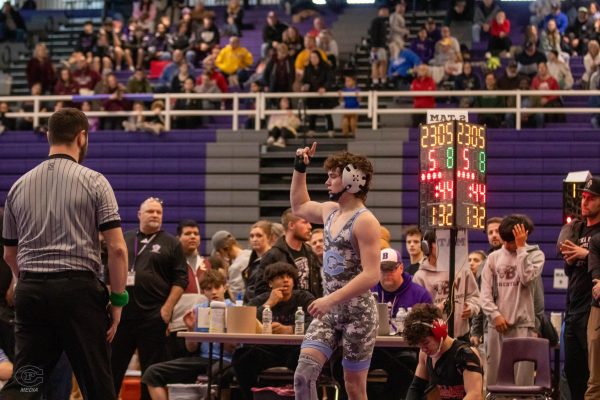Opinion: Streetcar Necessary for Growth of City
April 28, 2017
Think of any large city, such as Chicago, Denver, Minneapolis or Kansas City and one similarity comes to mind between the bunch: a quality public transportation system. It’s part of what makes these cities the accessible metropolises they are, part of what helps drive the economy and part of the crucial infrastructure of the city. While it may be laughable to argue that Omaha (pop. 446,599) needs the same amount of public transport as Chicago (pop. 2.7 million), an effective public transportation system goes a long way to establishing legitimacy as a major urban center. If Omaha wants to grow as a city, it needs such transportation to get to the big show.
Firstly, let’s not beat around the bush: this project is expensive. It may be the most common criticism of the streetcar, and it’s a fair one. Estimates place it at about $150 million, but according to Mayor Jean Stothert, taxpayers are likely to foot a bill of between $10-30 million. While that figure may still raise some eyebrows, especially in regards to tax hikes, the importance of a long-term project for infrastructure development cannot be understated. Critics argue that there are better ways for the money to be spent, most notably fixing and improving the current road system. However, roads will break and mend all the time. Winter will come and potholes will emerge. Lanes will need widening or repaving. It is a cyclical postponement of an inevitability.
Where road improvements are for the present, a streetcar is for the future. The current proposal for the system connects Midtown, the Old Market and downtown, but it certainly would not be unthinkable that future additions could stretch wide and far, connection regions such as Village Pointe with the downtown riverfront, as earlier proposals included areas further west, but were deemed too expensive. This may be getting ahead of the issue, but it is exciting nonetheless. With a streetcar system, there is room to expand, to grow the city and to promote economic development, while simple road fixes do little other than induce complacency.
Additionally, it is likely that a streetcar system would have profound economic benefits and make Omaha a more attractive city for businesses and individuals alike. According to Steve Jensen, a planning consultant for the streetcar, such a system would help limit the amount of parking spaces, allowing for greater numbers of businesses to be built in economically viable areas, such as the Old Market or Midtown.
Expectations of success were translated into reality in Kansas City, according to Joe Reardon, the president of the Kansas City Chamber of Commerce. Reardon give a ringing endorsement of the application of the system, citing numbers showing that over 5,000 people ride every day and over 1.4 million rode on the system in the past year. Reardon also said the streetcar led to $1.8 billion in real estate developments downtown.
There is little reason why Omaha could not experience similar success. The current bus system is shambolic, and replacing it with a heavily organized streetcar system could lead to a renewed interest and support in public transportation. While it may be difficult to say how many cars would be taken off the road by the streetcar system, it’d be enough to reap some health benefits, as heavy traffic causes stress. It may be a case of the chicken or the egg: do people create the demand for infrastructure, or does the infrastructure create a demand for people? In this case, a strong public transportation system such as a streetcar would attract businesses and provide an effective way to link up major parts of the city, perhaps eventually from one end to the other. It truly would be a large step for the city, especially if Omaha wants to be in the big time.




